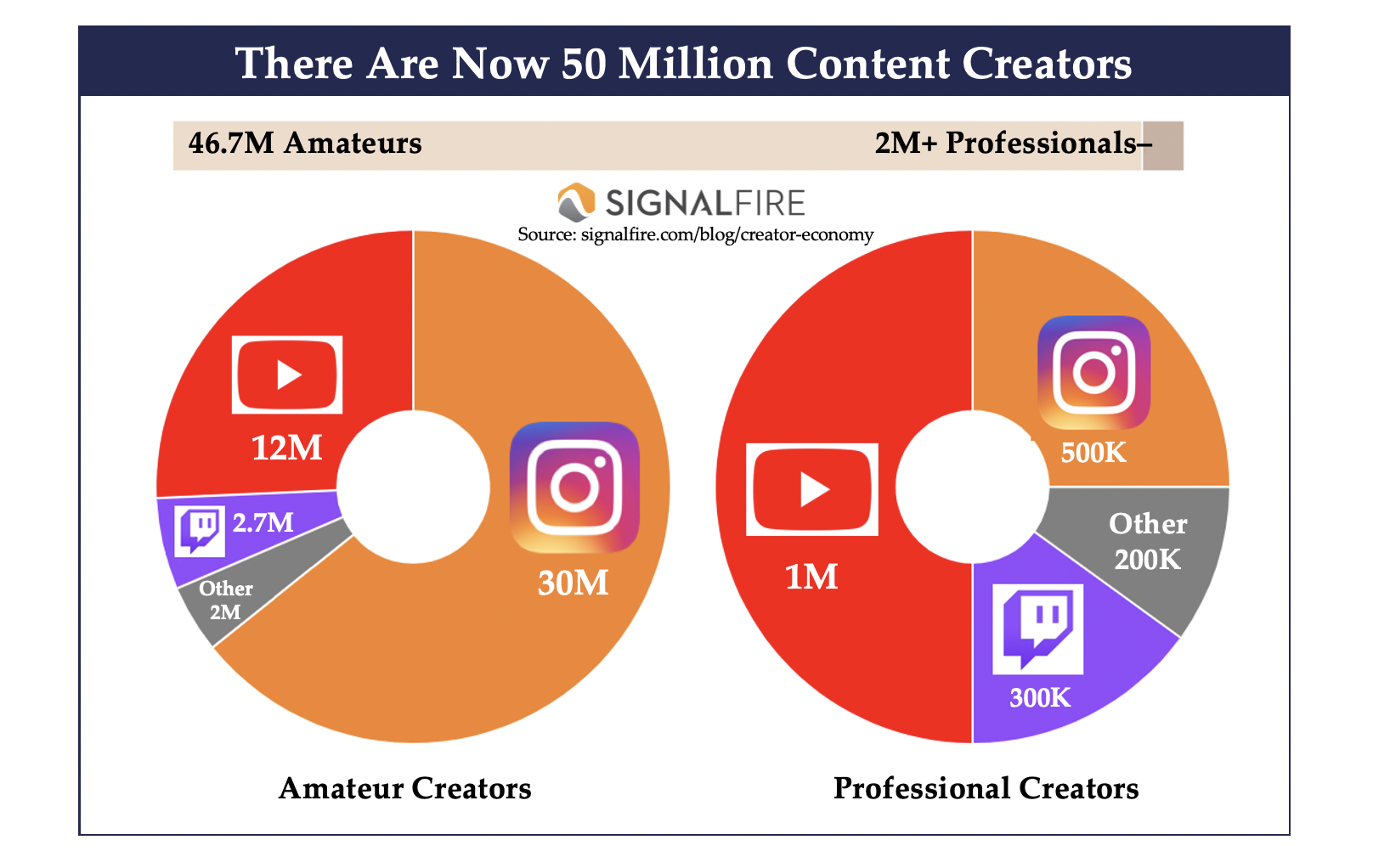HOW PROFESSIONAL CREATORS DISTINGUISH PAID CONTENT FROM FREE CONTENT

Paid content strategy has gotten quite a bit of buzz these last few months. Substack’s paid newsletters have led some journalists to strike out on their own, Twitter released a monetization called Super Follows just last month, and more than a few media publications (Forbes and Business Insider to name a few) offer paid tiers for premium, higher-value stories. As a recent opinion piece in The Information notes: “People follow people”.
All this hype around content monetization resurfaces an important question: What content should be free, and what content should you charge for? Also, is there such a thing as giving away too much information for free? (If you want your mind to make money, the answer is yes.)
According to a report from SignalFire, there are 50 million content creators, but only about two million of them are professionals. About half of them are on YouTube. Some of these creators use drivers like affiliate links or sponsorships to ratchet up revenue, but a lot of them make money by splitting their production efforts into two buckets of content: Free content and paid content.

Source: SignalFire
Paid content can be many things: Courses, memberships, swipe files, or paid newsletters are a few ideas. Free content, on the other hand, gets the word out about who you are, what you do, and why people should listen to you.
If you write or create content regularly and want to potentially monetize your best stuff, there are some easy ways to draw a line in the sand. Here are a few things to consider as you build up your content empire.
Paid content saves your audience time and energy
Amy Porterfield is the creator and host of the insanely popular Online Marketing Made Easy podcast. The show’s solo episodes are very tactical, almost like mini-workshops. Separately, Amy sells a $1,000 course on how to create webinars that convert.
She herself notes that some of the material in her paid courses is also sprinkled throughout various anecdotes and quips across her episodes. And if you were to go back through and listen through every episode in detail, you could probably cobble together a loose strategy around how to do a webinar. But do you really have time to wade through 300+ hours of audio content and try to piecemeal together a strategy?
Paid content saves your clients time and energy by giving them — say it with me — the right steps in the right order.Use free content to spotlight your strategies here and there, but save the juicy details of your winning approach for your paid tier.
“Do you really have time to wade through 300+ hours of audio content and try to piecemeal together a strategy?”
Paid content tackles the “how”
Free content helps your readers discern the ‘what’ and the ‘why’ behind a certain topic, whereas paid offerings deliver the how. Think of free content as helping your reader gain clarity and inspiration and paid content as the action plan. Here’s how the above example about webinars might play out:
- ‘What’ content explains what the heck a webinar even is or the current state of webinars on the internet today.
- ‘Why’ content could drill down on why webinars are a lucrative way to sell products, programs, or services to your audience.
- ‘How’ content would go into the step-by-step roadmap for creating a webinar that converts.
Free content helps followers discern what a webinar even is and why they’re effective; this content educates people, but also primes them for a potential purchase down the line. Paid content gives your customers the blueprint they need to succeed.
“Free content helps your readers discern the ‘what’ and the ‘why’ behind a certain topic, whereas paid offerings deliver the how.”
Paid content follows a framework
A simple tip to make your paid content more compelling is to identify a framework customers should follow to achieve success. This blueprint has not only gotten you results; it’s also gotten results for your clients as well, and customers can discern at any time where they are in the blueprint. Having a framework that is visually easy to follow is helpful — think Venn diagrams, pyramids, or other mental models.

Image from the author, example of a framework that a paid content offering is built on.
When your clients purchase from you, they’re not buying you; they’re buying a framework, system, or roadmap designed to get them from point A to point B. Take the time to define the framework your products, programs, and services follow and you’ll have an easier time landing the value proposition of your paid stuff.
If you’re using free content to market your business, it’s important that this content be generous and helpful for your readers. However, that doesn’t mean you can’t have a strategy that is win/win for everyone. Clearly define your offerings, tease out the what and why from the how, and you’ll be well on your way to getting paid for your best stuff.

